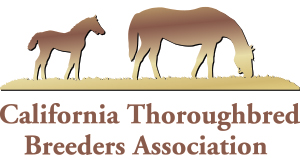By Jay Hovdey, DRF.com
DEL MAR, Calif. (Apr. 10, 2014) —
Del Mar president Joe Harper gazed westward at the expanse of his freshly laid turf course. In the distance, the familiar landmarks of Dog Beach, the Brigantine, and the AmTrak trestle were comforting sights, but beneath his feet was spread the new Bermuda grass, transferred only the week before from its growing fields in the desert. Harper looked down.
“Grow,” he said.
It will, although how fast depends upon how warm it gets in coastal San Diego County over the next three months and how the new turf responds to the various tricks of the growing trade employed by turf course superintendent Leif Dickinson.
Dickinson knows he can’t fool Mother Nature, but he can negotiate a working arrangement. To that end he is using plastic turf “blankets” to cover areas of the course and retain warmth, along with environmentally friendly supplements to enhance growth rate.
“It’s everything,” Dickinson said. “It’s water, it’s fertility, it’s nutrition, it’s adding the biology – it’s a whole process in place. But above all we need the right temperature and the right environment.”
Global warming, don’t fail ’em now. Opening day – tattooed on Dickinson’s forearm, is Thursday, July 17.
Harper is often asked what Del Mar management does with all the down time between its seven-week summer meets. The tone usually is sarcastic. This time, however, no one would have wished Del Mar’s off-season on any racetrack. Besides the multi-million dollar turf course installation – which included six months of excavation, removal, grading, and a challenging, sea level soil compaction of the course base – the synthetic main track required a major overhaul.
The Polytrack material from all but a strip along the outer rail was moved aside in order to remove the remains of the original asphalt lining over the layer of rocks covering the drainage system. The asphalt had deteriorated and the rocks were migrating into the Polytrack at an alarming rate. A sheet of protective fabric has been layed over the sub-base and a specially designed sifting system had to be devised to strain the Polytrack material before it was replaced.
“The rocks were the same size as a lot of the fiber and rubber elements in the synthetic material,” Harper noted. “It took some figuring out, but we were able to clean it up and have enough for the proper depth.”
In the midst of Del Mar’s Polytrack cleanup for the 2014 meet, Harper announced that the synthetic main track would be replaced with a dirt surface for the 2015 summer meet. The cost of a complete renovation of the Polytrack base, plus Del Mar’s isolation as the only artificial surface left in Southern California, were deciding factors in ending the track’s synthetic era, which began in 2007.
“It was a noble experiment,” Harper said. “I keep reminding myself, though, that of our five safest seasons here in terms of fatalities, two of them were on dirt tracks.”
Harper noted that the soil for the new dirt surface has been located in Southern California.
“That was important,” he said, “to have a local source.”
Track surfaces have been taking up a lot of space in racing news lately. Not long after Del Mar announced it was leaving the synthetic fold, Keeneland followed suit, leaving only a handful of North American tracks clinging to the newer technology.
In the meantime, the grass course at Fair Grounds in New Orleans came under criticism for its lack of durability and chronic inability to handle rain. A tough winter in the Northeast required NYRA officials to delay grass racing at Aqueduct until this week. And after a dry winter out West, Santa Anita Park management is holding its breath in hopes that the turf course will not become too hard for its newly lengthened meet, which runs to the end of June.
Meanwhile, the Colonial Downs team was selling tickets to witness the annual controlled burn of its grass course on April 11, a regular maintenance practice that the kids can enjoy for free. (Given the impasse between Colonial Downs management and the Virginia Horsemen’s Benevolent and Protective Association over the optimum number of racing days, a grass course on fire is rife with symbolism . . . if anyone wants to go there.)
The idea of a racetrack replacing its two courses in a matter of two years is probably not unprecedented, but in modern times it is an ambitious undertaking, both economically and artistically. Harper and his staff have a right to be holding their breath.
“I’ve seen photos of the track from back in what looks like the mid-1950s when they started what looked like the grading for a turf course,” Harper said. “It must have been quite a challenge, what with the salt level in the soil here at sea level. It took about three years to build that first course.”
The original Del Mar turf course made its debut in 1960.
Harper shifted his gaze to the banked first turn, now widened on the inside and just three months away from accommodating opening day fields.
“Fifty-four years?” he said. “I guess it was about time.”

